| |
If You Build It
Interesting building projects were either underway, just finished or
in the planning stages during most of the American period in Bad
Kissingen. The barracks area was rehabilitated or refurbished three
times, 1951, 1973 and 1985 by German construction companies. Smaller
projects occurred in the intervening years. US Army heavy
construction battalions living a gypsy existence in Germany,
traveled from site to site and job to job, built in stages, the
first ASP in the LTA and then expanded the facilities and finally
built the QRS.
Hardstands, wash racks and roads were American specialties. The
first wash rack was built in the LTA, specifically as a stop for the
returning American vehicles following maneuvers. Prior to the final
cross town road march through the city streets, all mud had to be
removed. The HAWK site was built in the mid 1960s; other projects
were done as time and funds were available. The engineer activities
helped improve both readiness and troop morale.
Twice the Army was involved in public works projects directly
related to the town of Bad Kissingen. It was part of a good neighbor
policy to help the city with major public works and at the office of
the Lord Mayor, they realized that hosting an American Army unit had
some advantages beyond the jobs and DM pumped into the local
economy.
Here are four snapshots of Army engineer construction activities in
the Bad Kissingen area, dating from the very first years at Daley to
the mid 1960s. All of these sites remain to this day, silent
reminders of our defense commitment and friendly partnership with
the German community.
Reiterswiesen Airstrip 1952
Built soon after US forces moved to Daley Barracks in 1951, this
construction appears to have been directed by Lt. John V. Parish of
First Platoon, "Charlie" Company, 18th Engineer Bn. His platoon was
stationed at Daley as part of the railway bridge and tunnel denial
program but at the airstrip, he clearly had construction on his mind
even if the platoon may not have had the necessary heavy equipment
as part of its set. Perhaps his platoon joined in with another
engineer unit to accomplish the task or his Military Academy
background made him one of the more highly trained civil engineers
in the immediate area and he was asked to assist. Passing through
Daley Barracks during this period was both the 35th Engineer
Battalion and Company "B", 1st Engineer Battalion.
| |
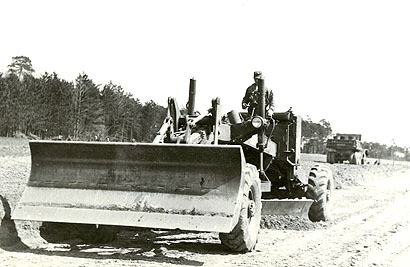 |
|
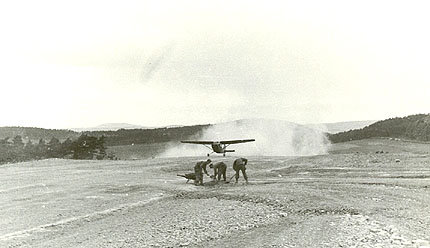 |
|
| |
Heavy construction
equipment moves in to help create the
airstrip.
--Parish family |
|
While engineers
continue the work, a light Army plane tries out the strip.
--Parish family |
|
Colonel Parish has departed for Fiddler’s
Green, however, the photos, generously provided by his family,
provide clear evidence that Lt. Parish and his men had a major part
in developing the strip that served Army aviation at Bad Kissingen
for forty years.
| |
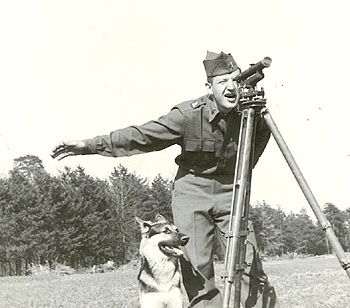 |
|
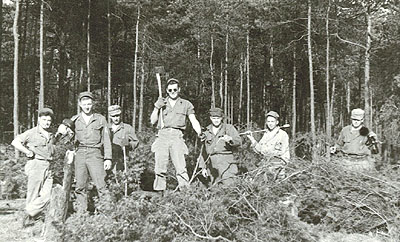 |
|
| |
Lt. Jack Parish works
out the fine details of the airstrip.
--Parish family |
|
The troopers of 1st
Platoon, Company C at work at the airstrip. The go-to-war mission
was the destruction of railroad bridges in the Bad
Kissingen-Mellrichstadt-Wurzburg corridor.
--Parish family |
|
| |
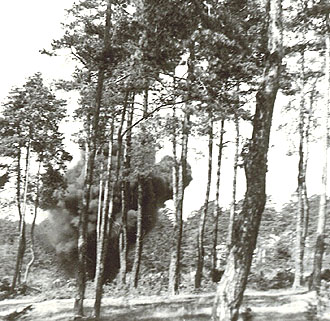 |
|
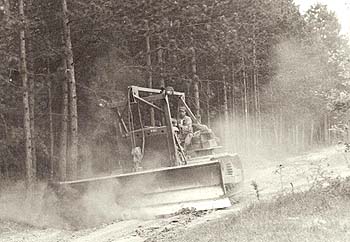 |
|
| |
Every trooper had
received demo training, here they finally had the chance to use it.
--Parish family |
|
Cutting the road to
support the strip.
--Parish family |
|
| |
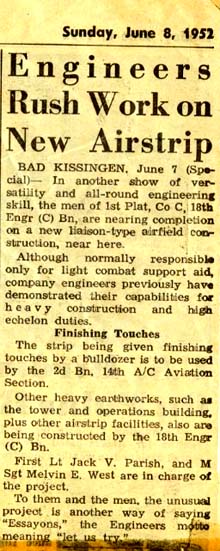 |
|
| |
A brief newspaper
article we
found among the photographs
--Parish family |
|
Freischwimmbad 1953
In 1953, LTC James Spurrier, commander of the recon battalion and
Daley Post Commander was instrumental in coordinating the efforts of
Army engineers as they assisted the city of Bad Kissingen in
building a new municipal swimming pool. We have yet to learn the
full details of how the project began, the city previously had a
swimming inclosure and beach area by the Saale River.
| |
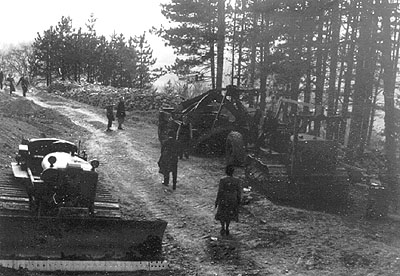 |
|
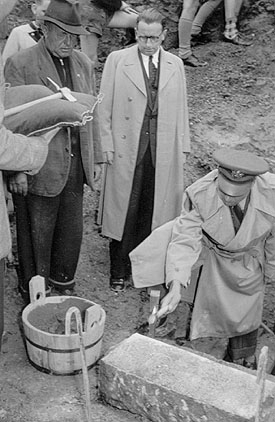 |
|
| |
|
|
|
|
Col (Ret) Patrick D. Tisdale MD:
"I followed Jack Parish as the platoon leader with the bridge
demolition mission and my soldiers knocked the top off that hill to
build the swimming pool. We also did some other site work involving
heavy equipment; the actual building of the pool was a German
operation. It has been a long time and I cannot recall where we got
the graders, bulldozers and so on. In the platoon, we only had the
trucks and trailers to support the demolition mission. I guess the
land moving equipment came from Wurzburg but I just do not have a
clear recollection. We also built a set of lawn tennis courts in the
park district of Bad Kissingen and in the barracks area, a football
field and baseball diamond. That tank unit commander on post (LTC
Spurrier 2/14 ACR ) kept us busy."
| |
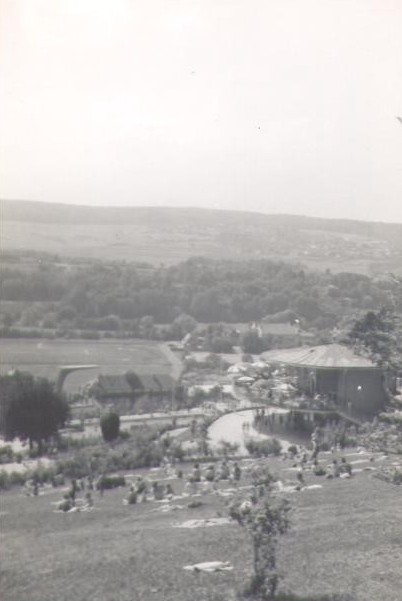 |
|
 |
|
| |
--Glenn McGinnis |
|
--Bob Stauffer |
|
Erwin Ritter did the research at the city
archives and found glowing newspaper accounts detailing the
construction to include moving 30 000 cubic meters of earth by the
Army engineer unit at a savings to the local economy of over 200 000
DM. The project went forward at a steady pace and less than ten
weeks after the initial groundbreaking, the "Richtfest", a public
celebration marking the project being 2/3’rds complete, was held.
With Dr. Hans Weiss, Lord Mayor, at his side, LTC Spurrier noted,
"... he was particularly honored to take part in the celebration and
be surrounded by so many friends. The pool would be the most
beautiful in Germany and would be a fitting addition to certainly
one of the most beautiful towns in Germany ..." . Local and regional
civil officials echoed this sentiment in their remarks.
| |
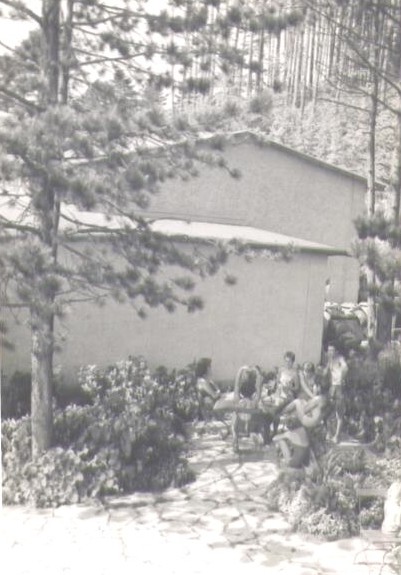 |
|
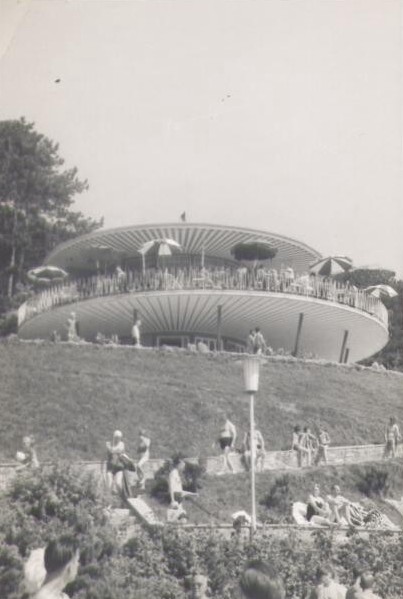 |
|
| |
This shot [and the ones
below] were taken by Glenn McGinnis
the summer of 1958, at
the Bad Kissingen swiming pool. Glenn was with A Btry, 1- 92nd.
Arty. |
|
--Glenn McGinnis |
|
On 13 August, with much ceremony, the new
Schwimmbad was opened and the official name, Terrassen-Schwimmbad am
Ballinghain was adopted in December. Beyond an exercise in civic
pride and civilian-military cooperation, the new pool represented
the birth of the new, post war economy in the town. Other German
efforts were soon underway in Bad Kissingen to insure the city was a
first class tourist destination. Over the years, further
improvements occurred at the pool area and during the Summer of
2003, one of the hottest in Europe on record, the pool certainly was
well utilized . At the site, there appears to be no mention of the
US involvement in the initial construction.
| |
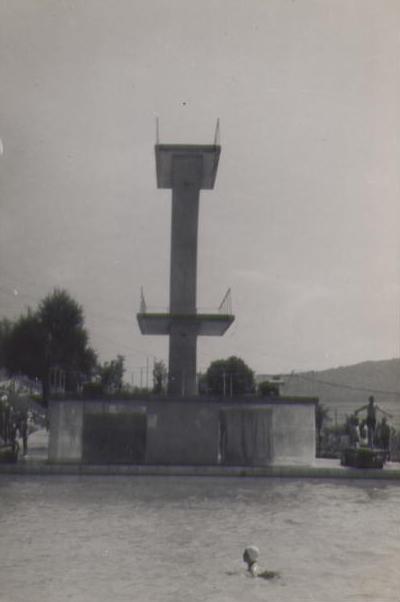 |
|
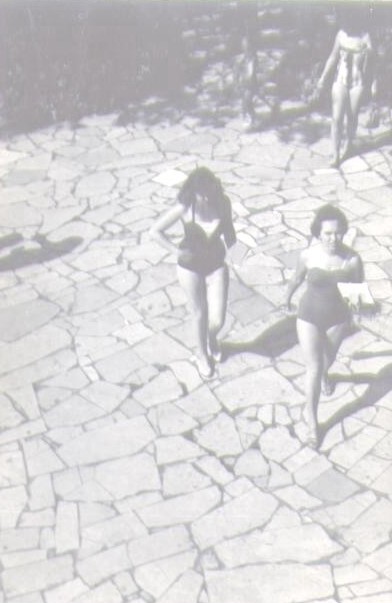 |
|
| |
--Glenn McGinnis |
|
--Glenn McGinnis |
|
Ringstrasse By-Pass 1960 and 1965
Keeping the city free of heavy American vehicles became a major
priority for the city administration of Bad Kissingen in the late
1950s. There were the usual accidents and noise associated with the
Army, none of this was conducive to the tourism and Kur industries.
Bob Kraimer, with the recon battalion in the mid 1950s recalled:
"As the Battalion Motor Officer, I was involved in the accident
investigations, the repairs and driver’s training programs and I
remember that despite our best efforts, there were too many
accidents in town. These were more than fender-benders, one I recall
in particular involved a German car trying to beat a tank through an
intersection with tragic results."
| |
 |
|
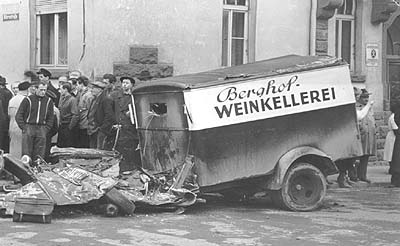 |
|
| |
As the Ring Strasse was
built, the entrance to the Kaserne was also improved.
--Stadtarchiv Bad Kissingen |
|
This is why it was
important to get the Ring Strasse built, an unfortunate but all to
common scene when a light delivery truck and a US tank met on Bad
Kissingen street in 1955. Not all were this bad but they did happen.
--LTC (Ret) Richard D. Moore |
|
LTC (Ret) Mack Van Hook picks up the story:
"the other major building project was the Ringstrasse which was
built in the early 1960s to carry traffic around the center of the
city. Bad Kissingen needed major funding from the Federal government
in Bonn to undertake the project. In the Spring of 1960, a
commission arrived to make an on site assessment of the need for a
bypass route to reduce or eliminate the through traffic on the
elegant Kurhausstrasse. Of course this commission was quartered in
the Kurhaushotel where they could gather a close range impression of
that traffic. In view of this situation it occurred to a very
talented and influential official of the city government that it
might help if arrangements could be made for some of the squadron’s
heaviest trucks to pass the hotel at about 0600 hours. Such
"arrangements" were duly agreed upon and for the fist time in many
years, a column of duce’n halfs transited Kurhausstrasse. It is
suspected that one or more had been rigged to backfire on driver
command. We have no way to know whether the Commission from Bonn had
already made up its mind before that morning, but it is quite
obvious that the City did get the money it sought."
| |
 |
|
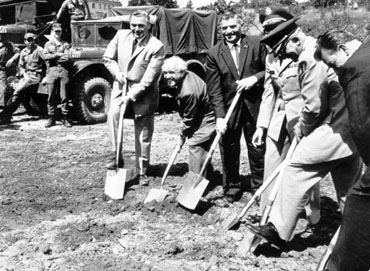 |
|
| |
Tanks of the 2/14 move
up Bebrastrasse enroute to Daley Barracks. The US built Ring Strasse
was soon underway to keep the tanks out of downtown Bad Kissingen. |
|
In 1965, Lord Mayor
Hans Weiss and members of the US Army at the ground breaking for the
second half of the Ring Strasse. Herr Weiss enjoyed a long and
important career in politics both in Bad Kissingen and then, for the
state of Bavaria in Munich. He is well remembered by all who knew
him.
--Stadtarchiv Bad Kissingen |
|
Once again, Lord Mayor Dr. Hans Weiss played a
key part in getting the project underway. Colonel Ephraim F. Graham
Jr., 14th RCO and LTC Judson F. Miller, commander of the 2nd Recon
Squadron were on hand for the groundbreaking. The US Army Company B,
10th Engineers and the 568th Engineer Battalion assisted with the
actual construction and one half of the new road was built.
Not until 1965 and a new push on road building, did the eastern half
of the ring reach completion. This time, Company A of the 82
Engineer Battalion, stationed at Daley Barracks, was responsible for
the earth moving operations. The Saale Zeitung reported that the
engineers had prepared over 650 meters of grade for the new road and
moved 20 000 cubic meters of fill.
Dr. Weiss was on hand to publicly praise the efforts of Lt. Kayes,
the Company Commander, as well as the support of the 82nd Engineer
Battalion commander, LTC Brown.
Special Weapons Bunkers in the LTA 1966
BG (Ret) Robert M. Wilson:
"In 1966 I commanded the 18th Engineer Battalion. This was a heavy
construction unit and I routinely had companies and platoons all
over Germany working on construction projects at both American
facilities and assisting the Germans through a "friendship and
partnership" program. The tasks were assigned on a platoon basis and
in 1966 we were building a series of ammunition bunkers in Bavaria
to include Bad Kissingen. I guess this would have been a four month
project and the engineers would be hosted by the local barracks. The
regulations required that quarters provided be equal to what the
regularly assigned soldiers enjoyed so often, we were placed in the
attics of the barracks. My soldiers took great pride in their work
and were back on the move as soon as the job was completed. I recall
that those bunkers were designed for high security so it is safe to
say that special weapons were probably involved."
| |
 |
|
| |
Special weapons
bunker line built in 1966
Norbert Ruckel |
|
|
|